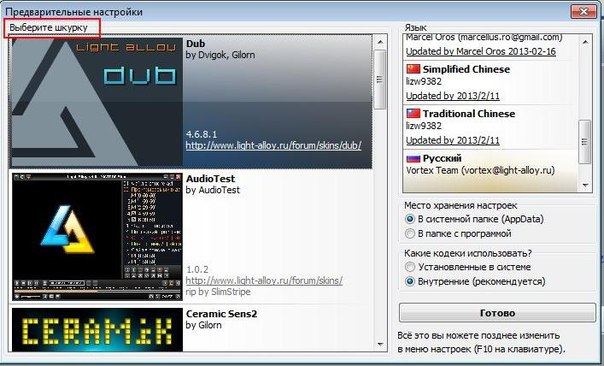Five reasons not to use your employees for translation and localization

Transferred to Alconost
We often work with international organizations that say: “We use our sales specialists in each country to translate content.” Or: "Every product manager refers to his contacts for language services." This is usually followed by a remark: “In my opinion, we are losing money, it all takes too much time, and I’m worried about protecting our global brand.”
When international companies use for localization and transfer of their own employees without appropriate skills and linguistic education, there are huge risks to the quality of the result, there are no levers of influence on the budget, and tasks are often delayed.
')
Of course, many multinational organizations have their own teams of qualified language specialists, which gives them tremendous advantages. But not all companies are so lucky. At the same time, such companies do not always prefer to turn to translators and linguists at outsourcing.
So, how to organize localization work to support growing business needs?
Depending on the corporate structure, some will attract language service providers for a particular market. Others will share the localization mission between stakeholders, product lines, business units within the company. The latter is called decentralized localization . If a separate resource is involved or the team responsible for providing linguistic services, it is called centralized localization .
Sometimes this choice is not at all obvious. You may know that a centralized structure is more efficient and cost-effective, but internal difficulties and barriers may prevent its implementation. One of the standard problems that we regularly encounter is the decentralized (and, accordingly, fragmentary) organization's approach to content. This often leads to the fact that in each country an independent approach to translations is developed and, even worse, internal resources are attracted to translate, read and manage localized documents. If you needed a heart surgeon, would you go to the dentist, what do you think? Translation and localization should be performed by highly qualified professionals.
Here are five reasons why you should not involve your own team, in which there are no professional linguists, in translation and localization.
1. Unstable quality

If you have seriously invested in your global brand, you will do everything possible to protect it and minimize the risk of depreciation of one of your largest assets. If you attract your local sales professionals or office team members to translate and localize marketing materials, you risk brand reputation and distract your income producers from their top priorities.
Local staff can be native speakers, know local culture and tastes; however, they are not familiar with the translation process, as well as with the relevant rules for handling the brand, characteristic attributes and jargon. If you often change translators and editors or follow the model “just give it to the work of the one who is free”, then the result and, accordingly, the level of translation quality will be variable. And your employees may not have access to all the necessary documentation and data to ensure that the translation matches the existing context. Using unqualified people to translate content will lead to unstable results.
This may not be so important for low-impact content such as custom (UGC), but high-impact content — such as branded and marketing materials — can be costly for your image.
2. Deadlines, prioritization and time
Ask any localization project manager what he thinks about using internal resources for proofreading translations - you will get one answer: this can turn into a nightmare of several weeks. Sales professionals want to sell. Marketers - create. Developers - to design. They do not want to spend their time reading and checking translations. This is not a priority for them, and therefore the deadlines and deadlines for the project will shift.
If translating content takes weeks, you lose valuable time to market. Work on translation and proofreading is often done in free time and is delayed in favor of more important working priorities. Are you ready to wait?

Time by Darren Tunnicliff
3. Lack of glossaries and translation memory
All people involved in creating and translating branded content should speak the same brand language. Every brand, regardless of language, has its own jargon. Need to use or avoid certain words and terms. Each translator or editor should be aware of existing glossaries , as well as have an understanding of how to use and update the translation memory.
It is unlikely that anyone outside the localization community will know how to use translation tools , manage translation memories, and keep glossaries current. Often in each country or division accumulates a set of tables in Excel, containing heterogeneous conflicting information. Ultimately, uncoordinated terminology enters the market, eroding the influence of your brand and even confusing consumers!
The use of glossaries and translation memories also saves you time and money in the localization and translation process. A quality localization service will help you create these valuable content assets.

Word Processor by Bachtiar Rahady
4. Without translation technology and scaling
You can trust the majority of the translation and localization work to people, but the application of technology is critical. Translation management systems, content management systems, development tools, translation editing are primary for effective and productive localization projects - we have seen this in Alconost for 11 years. Combining these technologies to increase productivity and manage workflows is a key benefit of working with a professional localization service provider.
Each profession has its own technology and a set of tools to help manage resources and processes. This fully applies to localization and translation. The mere fact that Oksana from accounting knows Spanish well does not make her a translator, and it is not surprising that she will not know how to use any of the working tools. That's when problems arise. By using an internal resource for translation, you also lose the opportunity to use cloud technologies to manage transfers ( Crowdin , for example) or it is advantageous to use centralized software licenses.

Atom vs. Ant-Man Setup Scale by JD Hancock
5. No cost savings and budget management
Another advantage of a centralized localization process is that you can centrally manage your budget. If you are using internal staff, do you internal offsetting their time? Or just ask them for a favor, which lowers the priority of translation tasks? Offsetting or transfer assistance as a last-minute favor is a per-transaction and, accordingly, economically inefficient approach. You not only risk getting low-quality translation, unstable and without all or main advantages of using translation memory, it will also cost you dearly. You can only save on the scale.

The 'LEGO' Budget by Duncan Allan
A successful localization and translation strategy involves the involvement of a qualified localization specialist. We at Alconost will be happy to help you - we have hundreds of successful cases in our portfolio.
About the translator
The article is translated in Alconost.
Alconost is engaged in the localization of applications, games and websites in 60 languages. Language translators, linguistic testing, cloud platform with API, continuous localization, 24/7 project managers, any formats of string resources.
We also make advertising and training videos - for websites selling, image, advertising, training, teasers, expliners, trailers for Google Play and the App Store.
Read more: https://alconost.com
Source: https://habr.com/ru/post/275129/
All Articles